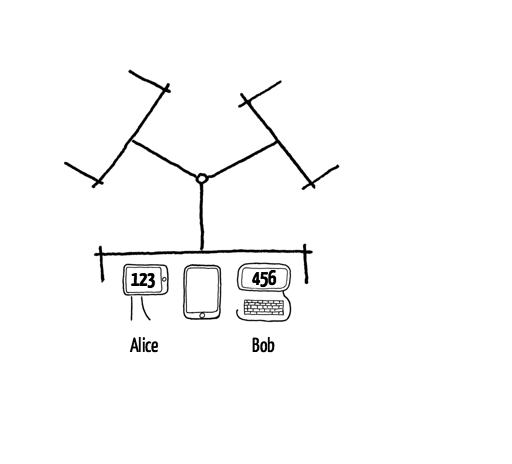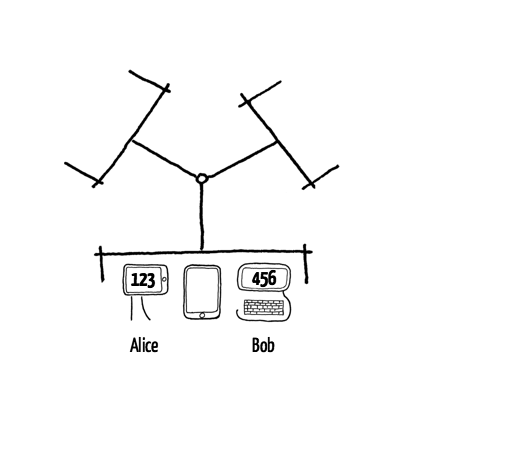RIG 2.0: CloudEvents
We are proud to release the next major milestone of the Reactive Interaction Gateway! Version 2.0 comes with lots of new features, changes and improvements. Many thanks to our contributors!

Here are some of the most prominent features (see below for some details and the Changelog for the full list):
- CloudEvents everywhere
- HTTP/2
- HTTPS (SSL termination)
- Amazon Kinesis
- SSL encryption for Kafka broker connections
- Much improved documentation
- Dedicated website
- OpenAPI documentation for RIG’s (internal) API
CloudEvents
We fully embrace the upcoming CloudEvents CNCF open standard. Coming from the serverless domain, CloudEvents greatly helps with interoperability among applications and vendor services. And the best thing about it: unlike other standards it is really simple by design. For example, an event that describes a created Github pull request looks similar to this:
{
"specversion": "0.2",
"type": "com.github.pull.create",
"source": "/desktop-app",
"id": "A234-1234-1234",
"time": "2018-04-05T17:31:00Z",
"data": {
"assignee": {
"login": "octocat"
},
"head": {
"repo": {
"full_name": "octocat/Hello-World"
}
},
"base": {
"repo": {
"full_name": "octocat/Hello-World"
}
}
}
}
For RIG, this means that it will get even easier to interface with CloudEvents-enabled services. Adopting the standard also deprecates the previous message format configuration. Going forward, all events that flow towards RIG, or are produced by RIG, must be CloudEvents.
Migration: Migrate all events to the CloudEvents spec. In most cases, you get away with simply putting your existing event in a CloudEvent’s
dataproperty. After all, CloudEvents is designed to be simple.
Event Subscriptions
As any good piece of foundational infrastructure, RIG never imposed the use of special libraries (or formats, or protocols) on your application but a pattern – so when starting fresh it would just fit. However, through ongoing integrations we found the need to support a greater variety of event dispatching use cases to simplify integrating RIG into an existing landscape.
In the previous RIG 1.x series, we have implemented the idea that back-end services target a user directly — effectively making a message out of an event:

Note how both Alice and Bob receive updates for flights they are not interested in. Also, while this is simple conceptually, it requires all services of interest to frontends to follow this pattern. Trying to do something in a different way requires services to couple themselves to RIG. For example, in order to send messages to all users, services would have to fetch/handle the list of online users. Just telling the world that something happened without targeting a specific user was effectively not supported.
Today, RIG 2.0 addresses this by allowing clients (i.e., users’ frontends) to simply subscribe to events they are interested in:

This shifts the responsibility of selecting the right messages from the back-end team to the front-end team and relieves back-end services from keeping track of online users in many cases.
Of course, RIG 2.0 continues to support fully the foundational behavior, now further enhanced and more flexible than ever, by using so-called subscription constraints (where messages include the user ID and the subscription relates to that ID). For more details on the mechanics, see the related Github issue.
Organizing around events rather than messages also enables us to integrate with other event-based brokers. For example, in cooperation with Serverless Inc., we have successfully built a proof-of-concept setup for exchanging events both ways with the Serverless Event Gateway.
Migration: Revisit the kind of messages and events that currently flow through RIG. Create (JWT-based) automatic subscriptions where you want to keep the current behavior (e.g., for messages that target a specific user). Change messages to events where services communicate changes and let your front-end code set up the right subscriptions.
Preview Features and Outlook
Our next goal is to improve RIG’s reverse-proxy capabilities. We are looking forward to simplifying the configuration and adding exciting new features. To get some early feedback, we include some of them as a “preview” in RIG 2.0: using the “target” and “response-from” directives, an API definition can be set up to produce HTTP requests to a Kafka/Kinesis partition instead of forwarding them to HTTP backends. If a client is interested in an asynchronous response, RIG can also be set up to wait for such a response on yet another Kafka/Kinesis partition. There have been some discussions internally around if and how to support this–feedback is welcome!
Other features planned:
- Prometheus monitoring
- Jaeger/OpenTracing
- Get rid of some tech debt and apply our learnings around how to structure properly Mix umbrella projects. This will allow us to integrate easily with new message broker products and protocols in the future.
For the current roadmap, you can always check out our Github milestones. We are looking forward to your feedback.
Feel free to star us on Github!
